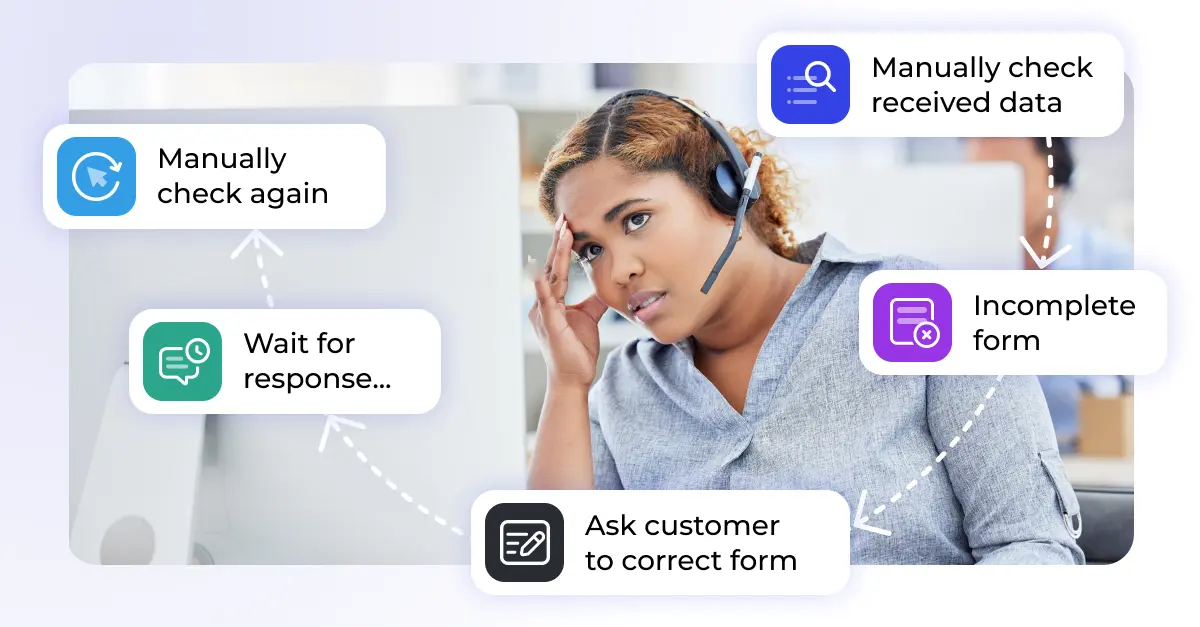Managing large volumes of customer support tickets is a challenge faced by businesses across industries. When done poorly, it can lead to delayed responses, frustrated customers, and overburdened agents. Leveraging Zendesk workflow can turn these challenges into opportunities, enabling teams to deliver exceptional service, streamline operations, and maintain customer satisfaction—even during peak times.
This article explores how to optimize Zendesk workflow to handle high ticket volumes, integrating strategies, statistics, and tools for enhanced efficiency.
The growing pressure of high ticket volumes
High ticket volumes often occur during product launches, seasonal peaks, or unforeseen crises. Businesses can’t afford to let queries pile up: 72% of customers expect agents to know their details without asking, and 40% expect first responses within an hour.
When faced with surges, outdated workflows can lead to delayed responses, missed tickets, and customer dissatisfaction. Zendesk, with its powerful automation and organization tools, offers a scalable solution for managing high ticket volumes efficiently.

Strategies for optimizing Zendesk workflow
1. Assess your current workflows
Before implementing changes, analyze your current ticketing processes. Key questions include:
- Are tickets being routed efficiently, such as by skill, priority, or workload?
- Is ticket distribution even, or are some agents consistently overwhelmed?
- How fast are first responses and resolutions? Are delays caused by manual inefficiencies?
By pinpointing bottlenecks, you can determine which tools and strategies will provide the greatest return on effort. Consider leveraging Zendesk analytics to identify repetitive tasks that can be automated. Learn how to reduce manual tasks with Zendesk analytics.

2. Automate ticket prioritization
Zendesk’s automation tools enable you to assign tickets based on urgency, customer tier, or query type. High-priority tickets can be escalated to senior agents, while low-priority inquiries are routed to self-service options or processed in batches.
Example scenarios:
- High-priority tickets: A premium subscription user reports a service outage.
- Solution: Automation escalates the ticket to a senior agent within 5 minutes, ensuring prompt action.
- Low-priority tickets: A customer inquires about refund policies.
- Solution: An automation sends the customer a knowledge base link and queues the ticket for follow-up if needed.
Did you know? In 60% of jobs, one-third of tasks could be automated.
3. Use triggers for seamless automation
Triggers execute pre-set actions when specific conditions are met. Examples include:
- Sending notifications for new tickets.
- Escalating tickets that have been unresolved for too long.
- Adding tags for better categorization (e.g., “Billing Issue”).
Trigger example: A customer hasn’t responded to a request for more information within 48 hours.
Trigger setup:
- Condition: Ticket status is “Pending” for over 48 hours without a customer update.
- Action: Send an automated follow-up email reminding them to provide the requested details.
Learn more about how to use Zendesk triggers and automations here.
4. Leverage macros for quick responses
Macros are pre-written responses to common issues, enabling agents to reply faster and more consistently. Examples include:
- Order confirmation updates.
- FAQs about returns or refunds.
- Troubleshooting steps for known issues.
Scenario: A customer inquires about their recent purchase status.
Pre-written response includes: Confirmation of order placement, estimated delivery date, and a link to track their order.
Example macro response: “Thank you for your order! Your purchase (#12345) has been confirmed and is scheduled to arrive by [date]. You can track your order here: [tracking link]. If you have further questions, feel free to reach out!”
5. Empower customers with self-service
A strong self-service portal, including a detailed knowledge base, reduces ticket volumes by enabling customers to find answers independently. Research shows that 67% of customers prefer self-service over speaking to an agent when possible.
Zendesk’s Help Center features allow businesses to:
- Publish FAQs and guides.
- Organize articles by category for easy navigation.
- Use analytics to identify gaps in knowledge content.

6. Integrate Knots apps for enhanced workflows
While Zendesk’s automation tools are robust, integrating middleware like Knots can take workflow optimization to the next level. Here are three standout Knots apps to consider:
API Data Sync
Automates data transfer between Zendesk and other tools, such as CRMs or ERPs. For instance, new tickets in Zendesk can automatically create leads in your CRM, reducing manual data entry and ensuring accuracy.
Round Robin Ticket Assignment
Distributes tickets evenly among agents, balancing workloads and ensuring no one is overwhelmed. This app is particularly useful for large teams managing high ticket volumes.
OCR for PDF and Scanned Documents
Converts scanned documents and PDFs into searchable text within Zendesk tickets. This is invaluable for handling tickets with attachments, saving time and ensuring agents have all the data they need.
Intrigued? Find out more about the Best Zendesk Apps for 20205!

Best practices for smooth adoption
To implement a new Zendesk workflow effectively, focus on these key steps:
- Train and prepare your team:
- Provide walkthroughs on using triggers, macros, and automation tools.
- Offer sandbox environments, detailed guides, and opportunities for ongoing learning.
- Encourage feedback by setting up channels for agents to suggest workflow improvements.
- Start small and scale gradually:
- Test workflows with a small team or department, refine based on feedback, and then roll out organization-wide.
- Balance automation and personalization:
- Use automation to streamline tasks, but avoid over-automation to maintain human touch.
- Personalize automated responses and ensure critical issues are handled by agents.
- Adapt for peak times and remote teams:
- Use dynamic ticket queues and proactive communication (e.g., status updates) to manage surges.
- Leverage internal notes, Slack integration, and transparent dashboards for seamless collaboration, especially for remote teams.
- Track metrics to optimize performance:
- Monitor KPIs like first response time, resolution rate, and CSAT with Zendesk’s reporting tools to continuously improve workflows. More about measuring customer support can be found in the here.
Managing large ticket volumes doesn’t have to be overwhelming. By optimizing Zendesk workflows with automation, self-service tools, and integrations like Knots, businesses can streamline operations, empower agents, and delight customers.
Invest in continuous improvement, track key metrics, and leverage advanced tools to turn high ticket volumes into an opportunity to shine. Whether you’re scaling your team or preparing for seasonal spikes, Zendesk offers the tools you need to stay efficient, agile, and customer-focused.








